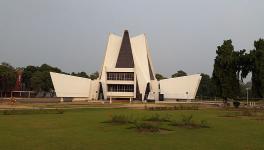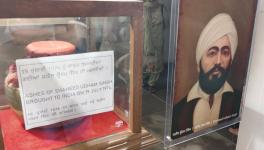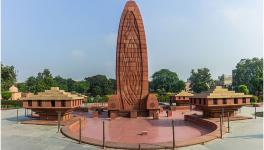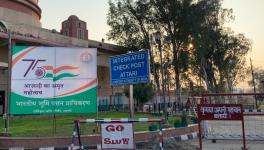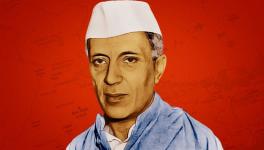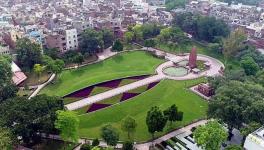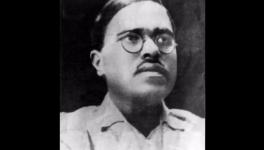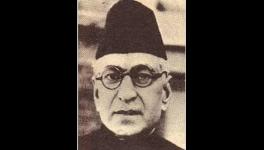Why We Remember Jallianwala Bagh Today
Representational use only.Image Courtesy: Wikimedia Commons
On 13 April 1919 the British Brigadier-General Reginald Dyer ordered unprovoked firing on a large gathering in Amritsar, a massacre that, till today, symbolises the zenith of colonial abuse. How did the atrocities of that attack influence the Indian struggle for independence, and what does it signify today? We bring you a selection of writings and interviews that examine the Jallianwala Bagh attack as both a struggle to overthrow colonial rule triggered by the horrific killing of innocents and the result of existing murmurs of dissent against foreign rule.
Dyerism Prevails in Global and Indian Politics
100 years after the Jallianwala Bagh massacre at Amritsar, Punjab, the United Kingdom refused to apologise for the brutal killing of over a thousand unarmed Indian civilians, gathered in protest against the Rowlatt Act. A century after the shooting by Col Reginald Dyer and his British troops, dyerism prevails in global and Indian politics. People who oppose the government’s ideology are removed from positions of power and responsibility. NewsClick editor-in-chief Prabir Purkayastha speaks with Nilanjab Mukherjee about the hopes of keeping dyerism out of India fading with every passing day.
An Instance of Radicalism Like None Before
The Jallianwala Bagh massacre is an instance of radicalism like none before or succeeding it. It was successful in many cities like Bombay [now Mumbai] and Calcutta [now Kolkata]. The movement shook and agitated the British government. Col Reginald Dyer forbade any assembly when he came to Amritsar in the aftermath of the earlier movement. On 13 April 1919, people called a meeting at the Jallianwala Bagh to demand the release of freedom fighters Satya Pal and Saifuddin Kitchlew. Dyer responded by opening fire on the large gathering from a narrow entryway–the only entry or exit point from the park–and killed countless people. The brave people refused to die from British bullets and jumped into the well at the park’s centre, gaining martyrdom. Noted historian Prof Irfan Habib looks back at the significance of Jallianwala Bagh.
Jallianwala Bagh Renovations Erase History
In 2021, the Narendra Modi government renovated the Jallianwala Bagh, just over a hundred years after the massacre by British imperialists. The walls that invoked feelings of fear and uneasiness, and reminded every visitor of the horrific events that occurred there, are now adorned with shiny flooring and brass sculptures. The government got widespread criticism for the changes, which were seen as an insult to the martyrs and another attempt to erase the history of India’s struggle for freedom.
Unforgettable Dr Saifuddin Kitchlew
Nationalist leader Dr Saifuddin Kitchlew from Punjab is often forgotten when we discuss India’s freedom struggle. He was considered the hero of Jallianwala Bagh. He formed the Hindustan Naujawan Sabha in the aftermath of the massacre and was a noted opponent of the Partition. All this was before he got kicked out of his hometown, Amritsar. He moved to Lahore and actively ensured safe passage for refugees from Pakistan to India. After a violent attempt on his life, he fled Lahore and roamed the streets with nowhere to call home. The latter stages of his life were unremarkable, and he was a forgotten man who stopped talking—for no one was listening. An essay by Anis Kidwai on her encounters with Dr Saifuddin Kitchlew in his final days, brought courtesy of the Indian Cultural Forum.
The Hour of Madness
In 1757, the British East India Company seized the lands of Bengal, beginning the nearly 200-year-long British colonisation of India, highlighted by famines, atrocities, corruption, and thievery. British rule started with a famine in 1770 and ended with one in 1943. Bengal was affected on both occasions. Starvation, poverty, and ill-treatment were the narrative of the entire imperialist period, but the Jallianwala Bagh massacre in April 1919 is arguably the defining moment in India’s colonial history. Freedom fighters and leaders from across the country accelerated their drive towards an independent India in reaction to the brutal killing of over a thousand people. One can compare the struggle for freedom by Indians, Africans, and Indigenous Americans, who faced similar issues and brutal reactions under the British flag. Historian and journalist Vijay Prashad links the past with the present in this essay, brought to you courtesy of Tricontinental: Institute for Social Research.
Get the latest reports & analysis with people's perspective on Protests, movements & deep analytical videos, discussions of the current affairs in your Telegram app. Subscribe to NewsClick's Telegram channel & get Real-Time updates on stories, as they get published on our website.









